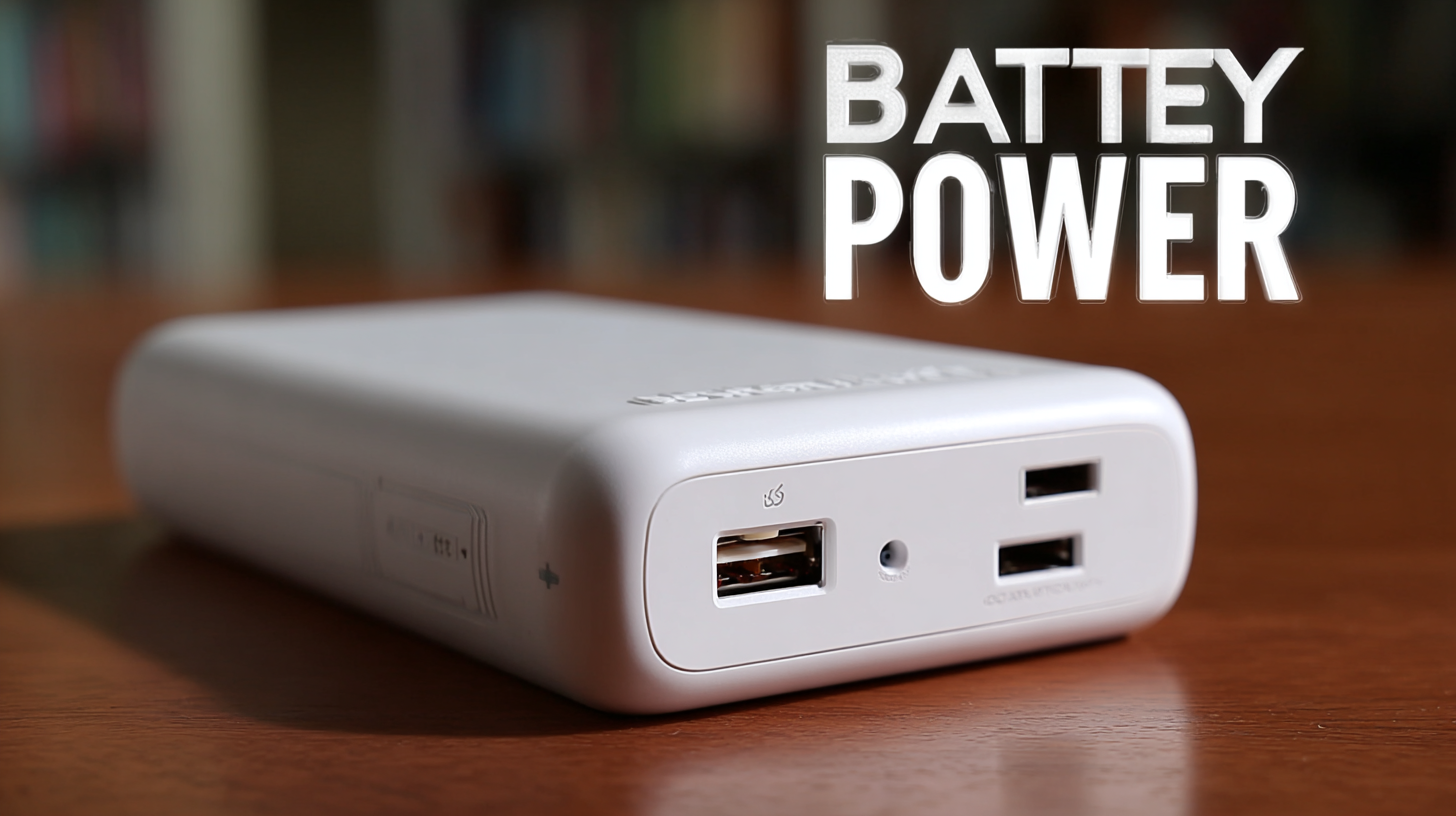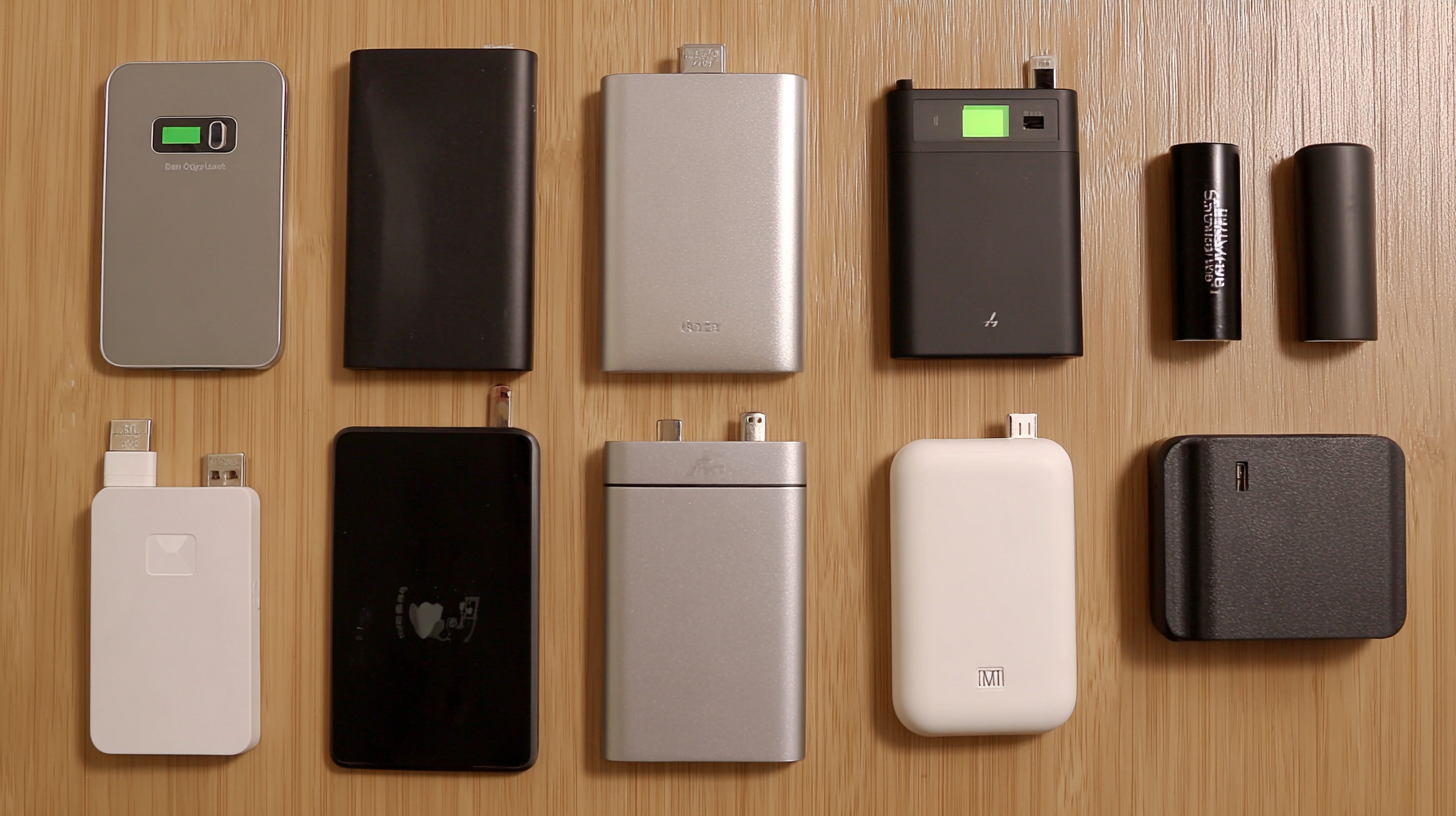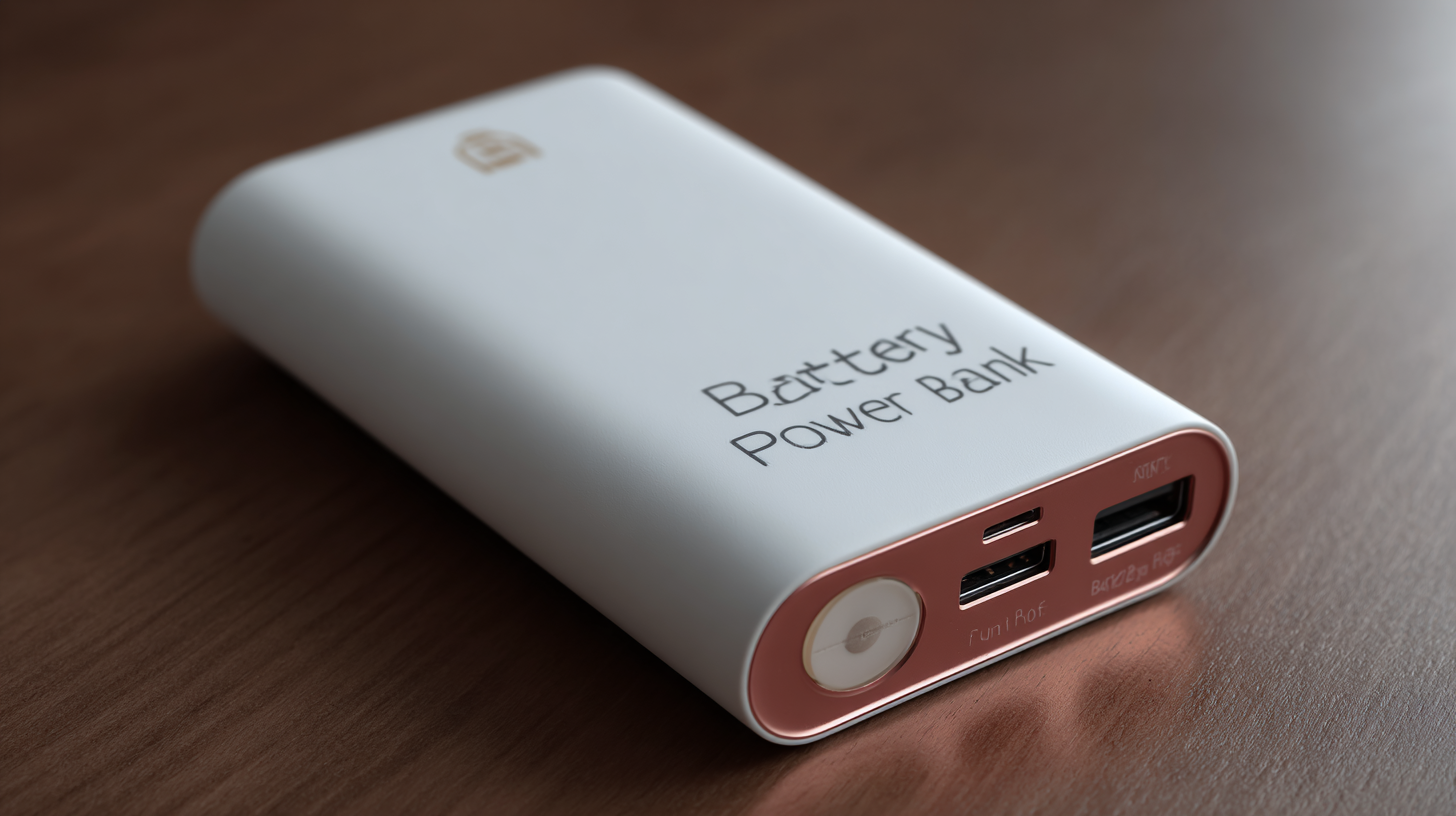Leave Your Message
In the digital age, the demand for portable power solutions has skyrocketed, making the Battery Power Bank an essential accessory for anyone reliant on electronic devices. As we step into 2025, understanding the latest industry trends and innovations becomes crucial for selecting the ideal power bank to meet your unique needs. With advancements in battery technology, charging speeds, and capacity variations, consumers are now faced with a diverse range of options that can cater to different lifestyles and usage patterns.

This blog will explore the top strategies for choosing the best Battery Power Bank, highlighting important features to consider, emerging trends in the market, and practical tips to ensure you find the right product that not only complements your technological requirements but also enhances your overall convenience. Whether you are a traveler, a student, or a professional on the go, knowing how to navigate the available choices can make a significant difference in your daily life.
When selecting a power bank, the first crucial factor to consider is the capacity, usually measured in milliamp hours (mAh). The capacity indicates how much charge the power bank can hold and how many times it can recharge your devices. For instance, a 10,000 mAh power bank can typically charge a smartphone around two to three times, making it ideal for daily use or short trips. If you're going on longer journeys or plan to charge devices like tablets or laptops, opting for a higher capacity, such as 20,000 mAh or more, may be necessary for adequate power supply.
Another key factor is the output voltage and current of the power bank. Fast charging capabilities can significantly enhance your experience, allowing your devices to charge quicker. Look for power banks that offer at least 2.1A output for efficient charging, as this can mean the difference between waiting hours versus only a couple of hours for a full charge. Additionally, consider the number of output ports available, especially if you often charge multiple devices simultaneously. A versatile power bank with multiple ports will keep your devices powered without the hassle of waiting for one to finish charging before starting on another.
| Factor | Description | Recommended Value |
|---|---|---|
| Capacity (mAh) | The total charge the power bank can store, affecting how many times you can charge your devices. | 10,000 - 20,000 mAh |
| Output Power | The maximum output power capacity, which determines how fast you can charge your devices. | 5V/2.1A |
| Number of Ports | The number of USB ports available for charging multiple devices simultaneously. | 2 or more |
| Size and Weight | Dimensions and weight affect portability and ease of carrying. | Compact and lightweight |
| Safety Features | Protection against overcharging, overheating, and short-circuiting to ensure safe usage. | Built-in safety mechanisms |
| Charging Technology | Features like Quick Charge or Power Delivery for faster charging speeds. | Includes fast charging technology |
| Price Range | Budget considerations for selecting a power bank that offers good value. | $20 - $50 |
When choosing a power bank, understanding the various capacity ratings, particularly milliamp-hours (mAh), is crucial. The capacity of a power bank directly correlates with its ability to store and deliver energy. A common misconception is that higher mAh ratings always translate to superior performance; however, several factors influence the actual usable capacity. Research indicates that many power banks deliver less than their advertised capacity due to inefficiencies in energy transfer and the internal components' quality. For instance, a power bank rated at 10,000mAh may only offer 7,000mAh of usable power when accounting for these losses.
Moreover, it's essential to consider the difference between mAh and watt-hours (Wh). While mAh measures the charge stored in a battery, Wh provides a broader understanding of energy capacity, taking voltage into account. Consequently, a battery with high Wh can deliver more energy over a more extended period compared to those with merely higher mAh ratings. As consumers navigate through the myriad of options available, focusing on real-world capacity and operational efficiency becomes imperative in selecting a power bank that effectively meets their charging needs.
When selecting a battery power bank, understanding the various port types is crucial for ensuring compatibility with your devices. USB-A ports are the traditional option, widely recognized and utilized for many years. They are typically found on older smartphones, tablets, and accessories. However, as technology evolves, the focus has shifted towards more versatile connections. USB-C ports have gained immense popularity due to their reversible design and ability to support faster charging and data transfer rates. Many contemporary devices, including laptops and the latest smartphones, come equipped with USB-C, making it a prime choice for anyone looking to future-proof their power bank.
Another important consideration is Lightning compatibility, particularly for Apple users. Devices like iPhones and iPads rely exclusively on Lightning connectors for charging and data transfer. Choosing a power bank with a built-in Lightning port can streamline the charging process, eliminating the need for additional cables. In addition to port types, it's essential to evaluate the total capacity and output options of the power bank, as these factors directly influence how quickly and efficiently your devices will charge. By paying attention to port types, you can ensure that your power bank meets all your charging needs while accommodating your current and future devices.
This chart illustrates the compatibility percentage of different power bank port types, helping you to select the best option for your charging needs.
When selecting the right power bank, size and weight are critical factors that align with your personal lifestyle and mobility needs. According to a 2023 report by Consumer Electronics Association, the average consumer prefers power banks that weigh less than 200 grams, making them easier to carry while commuting or traveling. A lightweight design not only enhances portability but also complements an active lifestyle, allowing users to maintain their everyday routines without feeling burdened. For instance, ultra-slim models offer a compact solution, fitting snugly into pockets or backpacks, which is essential for individuals who are constantly on the move.

In addition to weight, the size of the power bank should match the usage requirements of your devices. Reports indicate that power banks with capacities between 10,000mAh and 20,000mAh are ideal for daily users who rely on multiple devices throughout the day. A power bank of this capacity can charge a smartphone several times without being overly large or cumbersome. Ultimately, the balance between size, weight, and power capacity is crucial; choosing a device that aligns with your lifestyle can significantly enhance your overall experience, ensuring that you are always connected without the hassle of carrying excess bulk.
When selecting a battery power bank, it is crucial to evaluate extra features that can enhance your charging experience. Fast charging technology has gained significant traction, with many devices now supporting at least 18W output. This means that a power bank equipped with Quick Charge or Power Delivery can recharge your devices in a fraction of the time—an essential feature for anyone on the go. According to recent industry reports, users have noted a 50% improvement in charging speed, making fast charging a must-have for modern power banks.

Wireless charging options are also becoming increasingly popular. Many users appreciate the convenience of simply placing their devices on a charging pad without dealing with cables. As of 2025, a significant percentage of power banks now come with wireless charging capabilities, catering to the growing number of wireless-enabled devices on the market. Opt for a power bank that meets the latest Qi standard to ensure compatibility with a wide range of devices.
Tips: Always check for LED indicators that display battery life; this feature prevents unexpected power loss. Additionally, consider a power bank with multiple outputs if you often charge multiple devices simultaneously. This allows for sharing power with friends or keeping your tech ecosystem charged efficiently.
